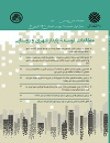The role of indigenous knowledge in the livability of rural areas of Sistan
Today, one of the issues that has attracted the attention of researchers is the study of the role of indigenous knowledge in the development and livability of rural areas; Because indigenous knowledge by using experimental contexts, can play an important role in the transfer of information and fertility of decision-making power in the villagers and be effective in the optimal use of resources and facilities. While examining the economic, socio-cultural and ecological capabilities of the study area, examine the positive effects of indigenous knowledge on each of these capabilities. The statistical population of this study was 368 questionnaires for households in rural areas of Sistan and also based on Cochran's formula and sample size correction formula for households. Excel, ArcGIS, SPSS software, Victor technique and stepwise regression and Wilcoxon tests were used to analyze the data. The results of Wilcoxon test with a value of Z equal to -2.689, which is significant at an error level of less than 0.01, can be said to be statistically significant with 0.99 confidence, the difference in the role of indigenous knowledge in the livelihood of rural areas of Sistan is significant. This result indicates the confirmation of the first hypothesis of the research that the villages of Sistan have a significant difference with each other in terms of indigenous knowledge in livability, Chark and Gori villages have the highest level of indigenous knowledge and Sanjarani, Ismail Ghanbar and Chakal villages have the lowest level of indigenous knowledge among the studied villages.


